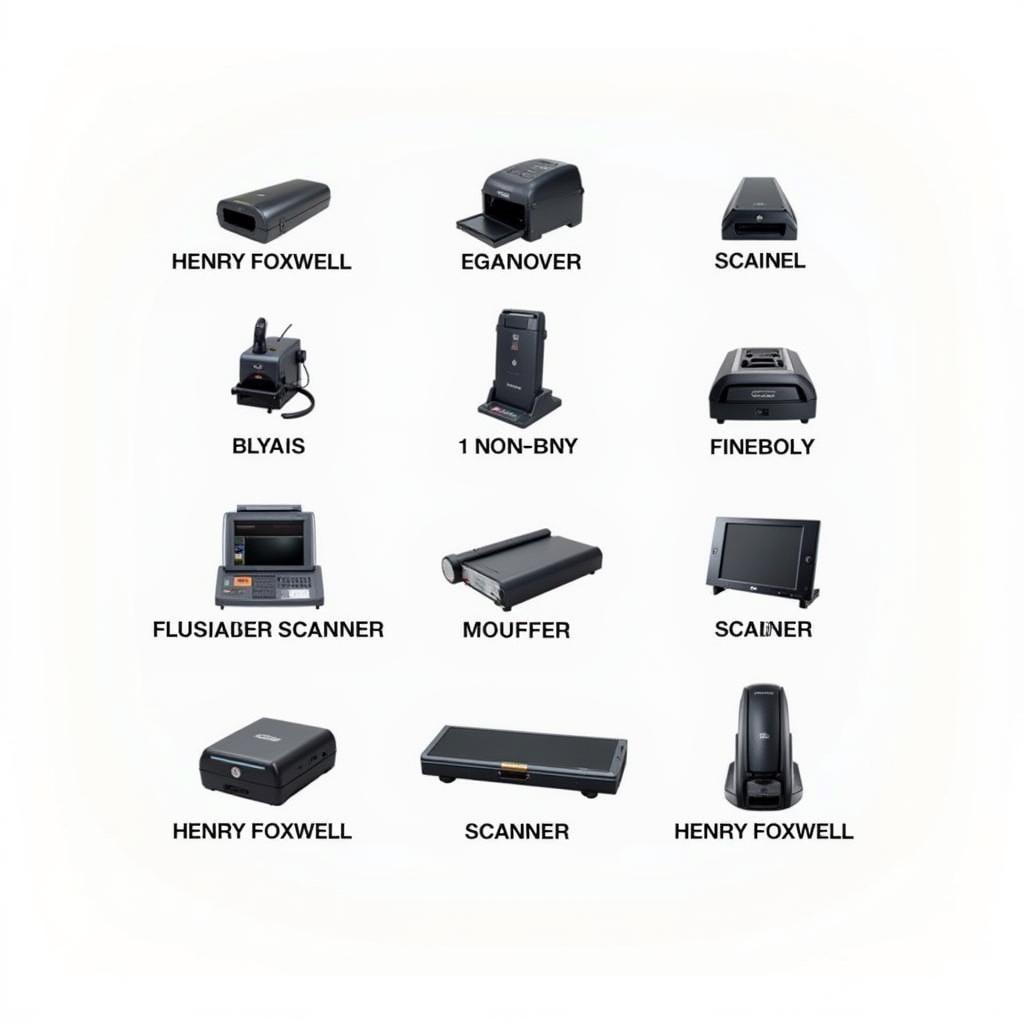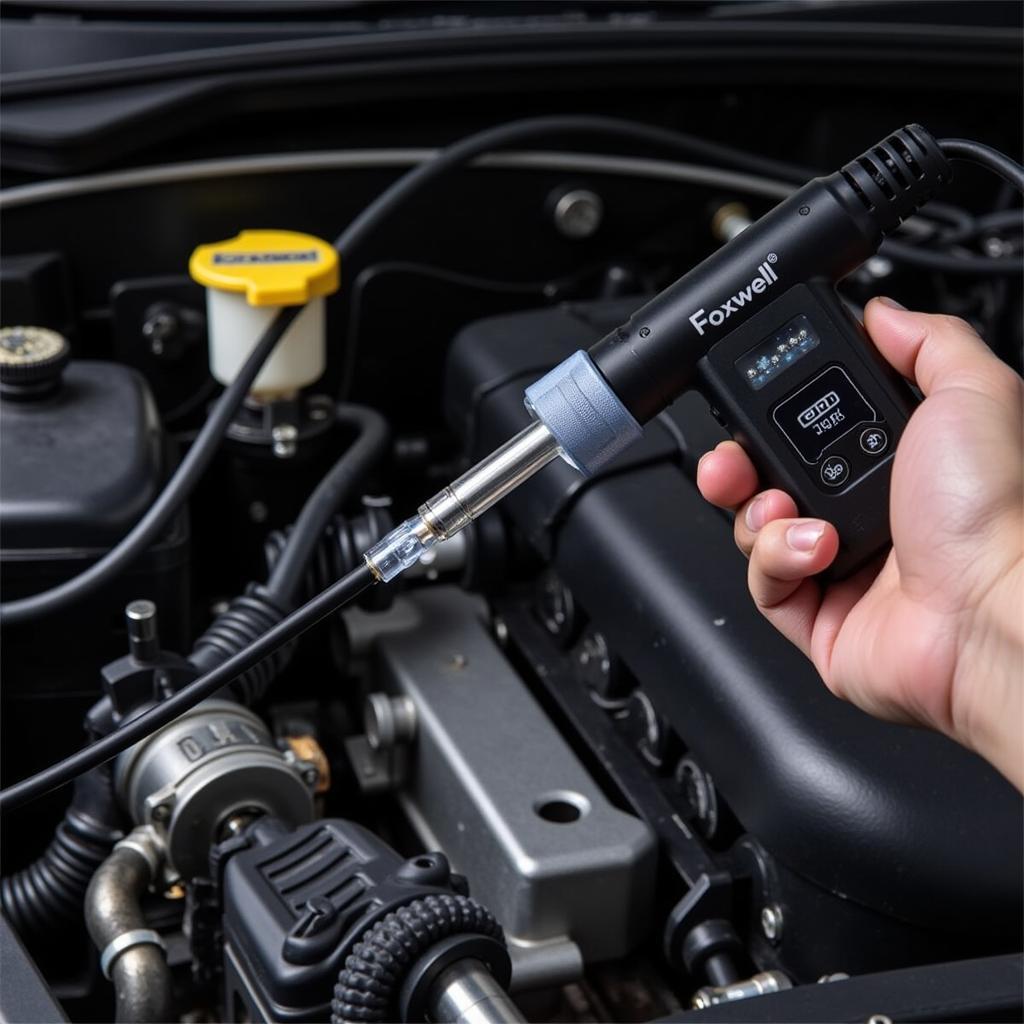Understanding your car’s oil pressure is crucial for its health and longevity. Ignoring potential issues can lead to costly repairs down the line. This guide will walk you through how to use the Foxwell NT301 scanner to accurately read your oil pressure, empowering you to address problems before they escalate.
Why is Oil Pressure Important?
Think of your engine’s oil as its lifeblood. Oil pressure ensures this vital fluid circulates properly, lubricating moving parts, reducing friction, and preventing overheating. Low oil pressure can lead to catastrophic engine damage, while excessively high pressure can strain seals and gaskets.
Common Causes of Oil Pressure Problems
Before diving into the specifics of reading oil pressure with the Foxwell NT301, let’s examine common culprits behind oil pressure issues:
- Low Oil Level: This is often the easiest fix. Check your dipstick regularly and top up as needed.
- Worn Oil Pump: The oil pump is responsible for pressurizing the system. Over time, it can wear out, leading to reduced pressure.
- Faulty Oil Pressure Sensor: A malfunctioning sensor might provide inaccurate readings, triggering false alarms or masking a real problem.
- Blocked Oil Passages: Sludge buildup or debris can restrict oil flow, affecting pressure.
Introducing the Foxwell NT301 for Oil Pressure Diagnosis
The Foxwell NT301 is a powerful yet user-friendly OBD2 scanner that provides a wealth of information about your vehicle, including real-time oil pressure readings. This affordable tool eliminates the guesswork and helps you pinpoint potential issues accurately.
Step-by-Step Guide: Reading Oil Pressure with the Foxwell NT301
- Locate Your OBD2 Port: Typically found under the dashboard on the driver’s side.
- Connect the Foxwell NT301: Insert the scanner’s cable into the OBD2 port.
- Turn On the Ignition: Turn the key to the “on” position but don’t start the engine.
- Power Up the Foxwell NT301: The device will boot up and automatically connect to your vehicle’s computer.
- Navigate to “Live Data”: Use the arrow keys on the scanner to find and select the “Live Data” option from the main menu.
- Select “Oil Pressure”: Scroll through the available live data parameters until you find “Oil Pressure.”
- Observe the Reading: The Foxwell NT301 will display the current oil pressure in PSI (pounds per square inch).
Interpreting the Results
Refer to your vehicle’s owner’s manual for the manufacturer’s recommended oil pressure range. Generally, a reading of 20-40 PSI at idle and 40-60 PSI while driving is considered healthy. However, these values can vary, so always consult your manual for precise specifications.
John Smith, a certified automotive technician with over 20 years of experience, emphasizes, “Don’t rely solely on a single reading. Monitor the oil pressure over time and under different driving conditions to get a comprehensive understanding of your engine’s health.”
What if the Oil Pressure is Abnormal?
- Low Oil Pressure: If the reading is significantly lower than recommended, immediately stop driving and investigate the cause. Low oil pressure requires immediate attention to prevent severe engine damage.
- High Oil Pressure: While less common, excessively high oil pressure can also indicate a problem, potentially with the oil pressure sensor, relief valve, or a blockage in the system.
Sarah Jones, lead mechanic at a renowned auto repair shop, advises, “Document any unusual oil pressure readings and consult a qualified mechanic. Timely diagnosis is key to avoiding costly repairs.”
Beyond Oil Pressure: Exploring Other Foxwell NT301 Capabilities
The Foxwell NT301 offers a range of additional features to help you maintain your vehicle:
- Read and Clear Diagnostic Trouble Codes (DTCs): Identify and clear error codes stored in your car’s computer.
- Reset Oil Service Light: After an oil change, use the NT301 to reset the oil service reminder. For specific instructions, you can check our guide on Foxwell NT301 oil reset.
- View Live Data Streams: Monitor various engine parameters in real-time, such as coolant temperature, throttle position, and oxygen sensor readings. Learn more about accessing live data on the Foxwell NT301 live data page.
- Perform Component Actuations: Test individual components, such as fuel injectors or solenoids, to ensure proper operation.
Conclusion
Regularly checking your oil pressure is crucial for maintaining your vehicle’s engine health. The Foxwell NT301 scanner makes this task straightforward, providing accurate readings and empowering you to detect potential problems early on. By staying informed and proactive, you can avoid costly repairs and enjoy a smoother, safer driving experience. If you’re located in Kittery, Maine, you can find the Foxwell NT301 at Foxwell 2 Manson Street Kittery Maine.
Need help with understanding your Foxwell NT301 readings or have any other automotive questions? Contact ScanToolUS today at +1 (641) 206-8880. Our team of experts is here to assist you. We’re located at 1615 S Laramie Ave, Cicero, IL 60804, USA.




Pingback: Foxwell NT301 Oil Pressure: A Comprehensive Guide - Car Scan Tool